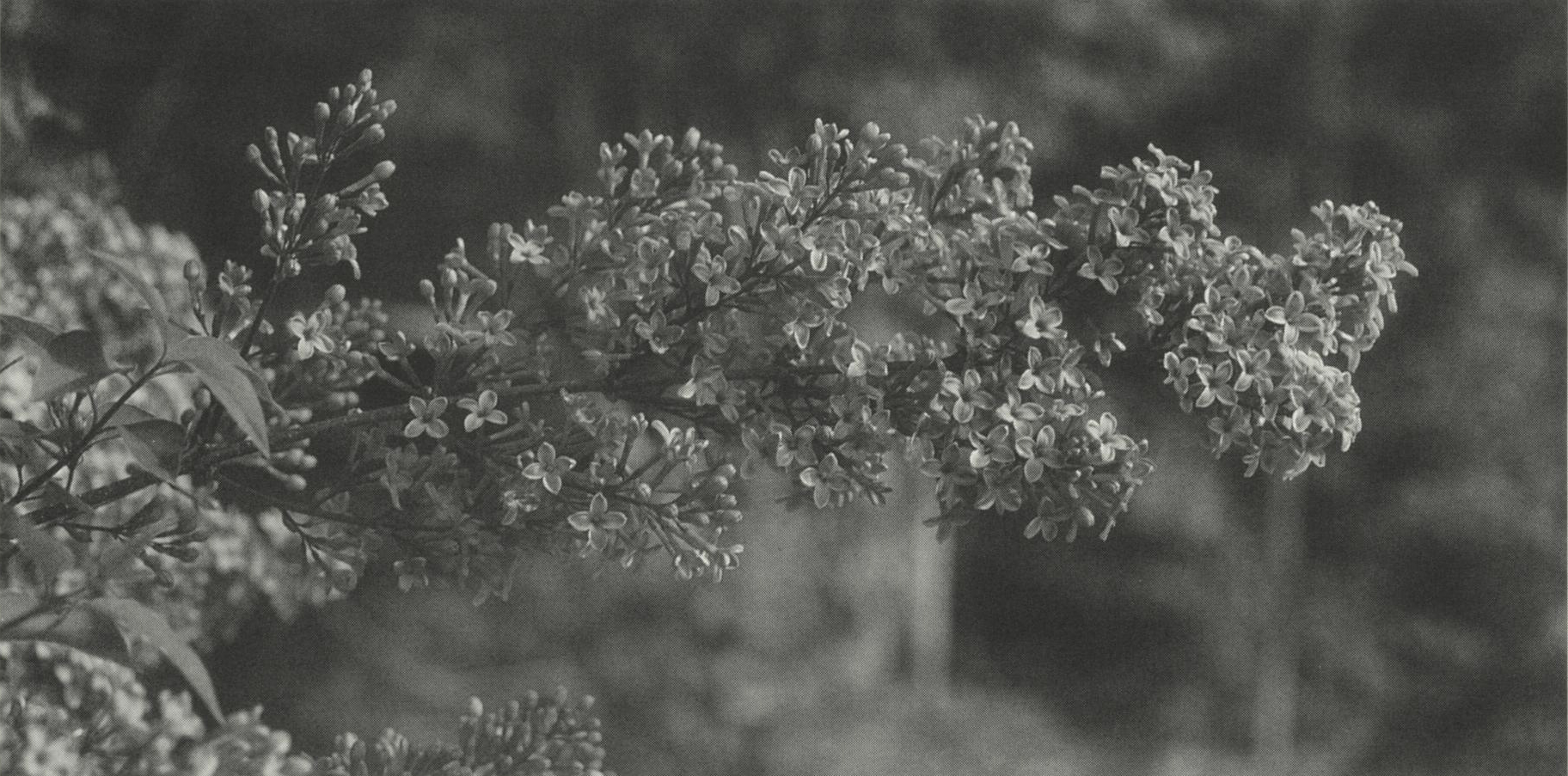Lilac cultivars may be selected for fragrance, color, and abundance of flower. ’Lilac Sunday’ was chosen for all these traits but even more for its very attractive habit.
Botanical gardens and arboreta routinely share seeds with one another, which they list in publications called Index Semina. Reviewing the 1978 Index Seminum from the Botanical Garden of the Chinese Botanical Academy, Beijing, Peoples Republic of China, I checked the olive family to see what lilacs might be offered. What I found was puzzling. Listed was Syringa persica. The plant I knew as Syringa × persica is of uncertain parentage, believed to be a hybrid, and not known to produce progeny. If S. persica and S. × persica were one and the same and the Chinese plant had produced seed, the seedlings might yield evidence of the presumed parentage. Or perhaps it was no hybrid at all but an incorrectly named species native to China, in which case it was a problem for taxonomists. Whatever the parentage, I wanted to grow the plant.
We received the seeds in spring 1979. Since lilac seeds usually germinate better after a cold stratification of several months, they were so treated and were ready for sowing on August 20, 1979. By September 4, eighteen had germinated and were later potted. The seed leaves of lilacs are similar regardless of species, but when the next set of leaves appeared, the true leaves, I was surprised. Most had entire leaf margins, as do most species of lilac, but two had cut leaves like Syringa protolaciniata (then known as S. laciniata and previously as S. × persica var. laciniata).
What had happened? My own suspicion is that the seed-bearing parent was S. protolaciniata. When S. protolaciniata is crossed with S. vulgaris, the common lilac, the hybrid progeny are known as S. × chinensis (which is commonly confused and sold as S. × persica, or the Persian lilac). Still, the possibility exists that the male parent is S. × hyacinthiflora, or even S. oblata.
However, what is important is not the confusion in identity and nomenclature, but that one of the above-mentioned seedlings has matured into a very attractive landscape plant. The Living Collections staff of the Arboretum is pleased to introduce this new cultivar, Syringa × chinensis ’Lilac Sunday’.
The plant that bears the name of the Arboretum’s annual celebration must be special. This time-honored Boston tradition draws thousands to the Arboretum in mid-May to experience firsthand the showy, fragrant flowers of the lilac collection. The Arboretum’s lilacs were becoming a popular destination in peak bloom time even before the early 1900s when it became an official institutional event.
Added to that consideration is another: With the number of lilac cultivars approaching a thousand, the decision to add yet another can’t be taken lightly, even though few collections hold more than a fifth of that number, and most of those are cultivars of Syringa vulgaris or S. × hyacinthiflora. (S. × chinensis can claim less than twenty cultivars.)

Truly the cultivar ’Lilac Sunday’ is special, as became clear from comments made by staff members. An advantage of working at an arboretum is the ability to plant potential cultivars where other horticulturists will routinely see them. I planted the future ’Lilac Sunday’ in a prominent spot at the edge of the greenhouse nursery and watched and waited. I soon learned that I was not alone in falling victim to the charms of ’Lilac Sunday’. Some of my colleagues even came looking for it after it had been relocated to a special site in the lilac collection.
Citation: Alexander, J. H. III. 1997. ‘Lilac Sunday’—The cultivar. Arnoldia, 57(1): 12–13.
The flowers of ’Lilac Sunday’ are a fragrant, pale purple—78-C on the Royal Horticultural Society Colour Chart—and they produce an abundant display every year, coinciding with the earlier cultivars of the common lilac, Syringa vulgaris, and a few days before S. × chinensis ’Saugeana’ and ’Alba’. Although each individual flower is small, about half-an-inch (13 mm), the flower panicles are produced not only at the branch tips, like the common lilac, but also from the lateral buds along the stems at a distance of two or more feet from the branch tips. The branches themselves are willowy, arching under the weight of the flowers and giving the impression of being two feet long. ’Lilac Sunday’ should attain a size similar to other cultivars of S. × chinensis, about twelve feet high and as wide. With its cascading blossoms, it will make a very attractive lilac “fountain.”
Easily rooted from cuttings, five hundred plants have been propagated by tissue culture for distribution at the Arboretum’s fall plant sale.
Jack Alexander is Plant Propagator of the Arnold Arboretum.
From “free” to “friend”…
Established in 1911 as the Bulletin of Popular Information, Arnoldia has long been a definitive forum for conversations about temperate woody plants and their landscapes. In 2022, we rolled out a new vision for the magazine as a vigorous forum for tales of plant exploration, behind-the-scenes glimpses of botanical research, and deep dives into the history of gardens, landscapes, and science. The new Arnoldia includes poetry, visual art, and literary essays, following the human imagination wherever it entangles with trees.
It takes resources to gather and nurture these new voices, and we depend on the support of our member-subscribers to make it possible. But membership means more: by becoming a member of the Arnold Arboretum, you help to keep our collection vibrant and our research and educational mission active. Through the pages of Arnoldia, you can take part in the life of this free-to-all landscape whether you live next door or an ocean away.

